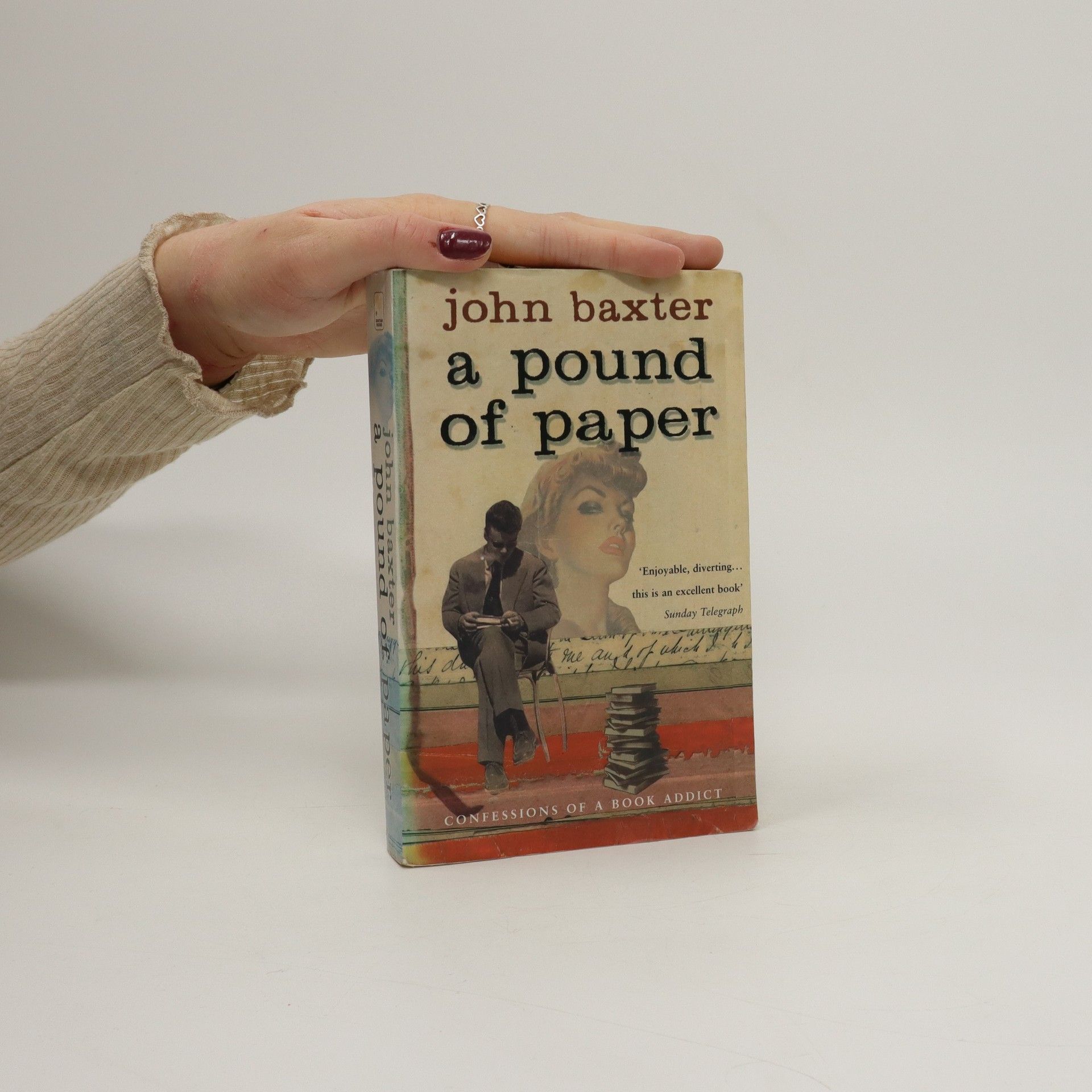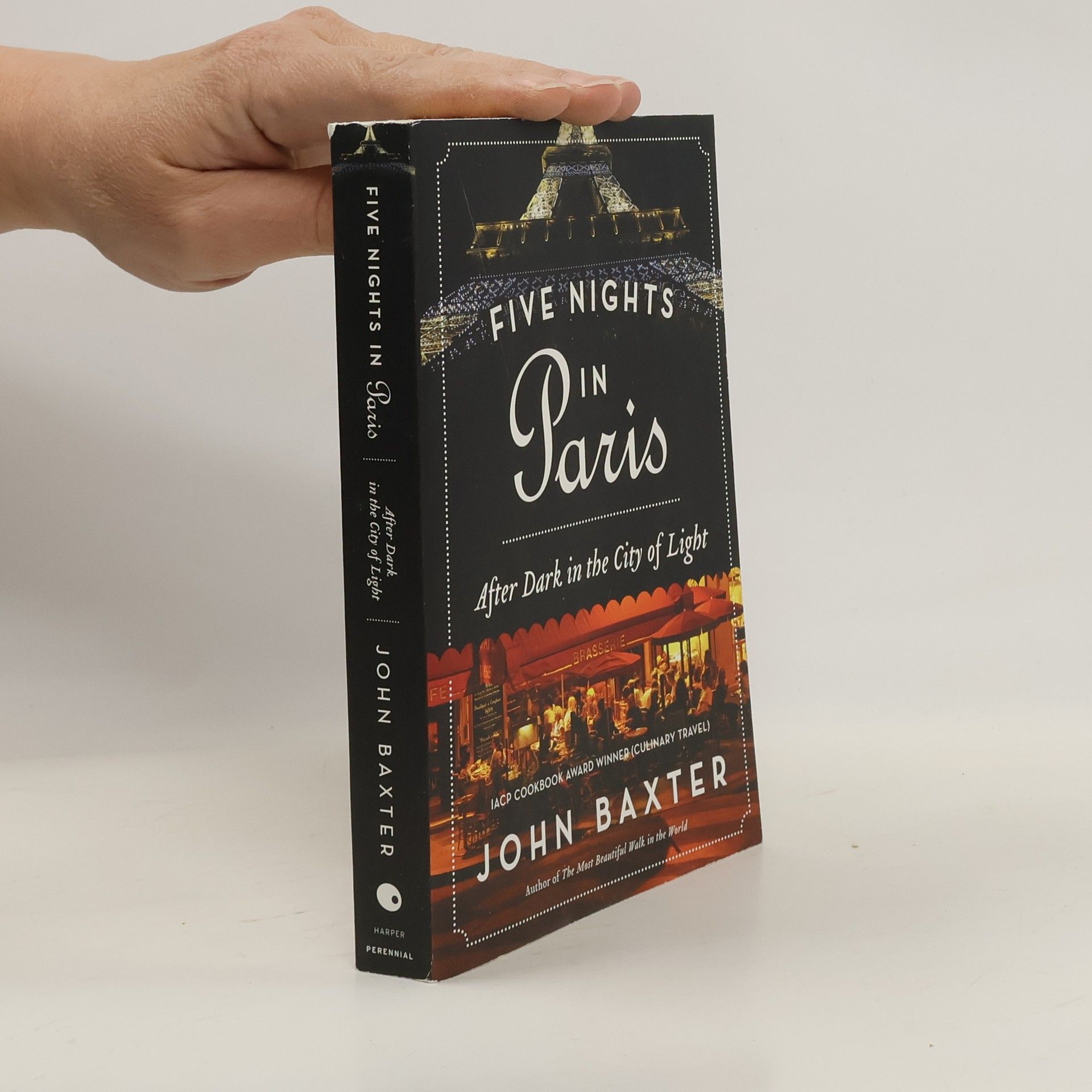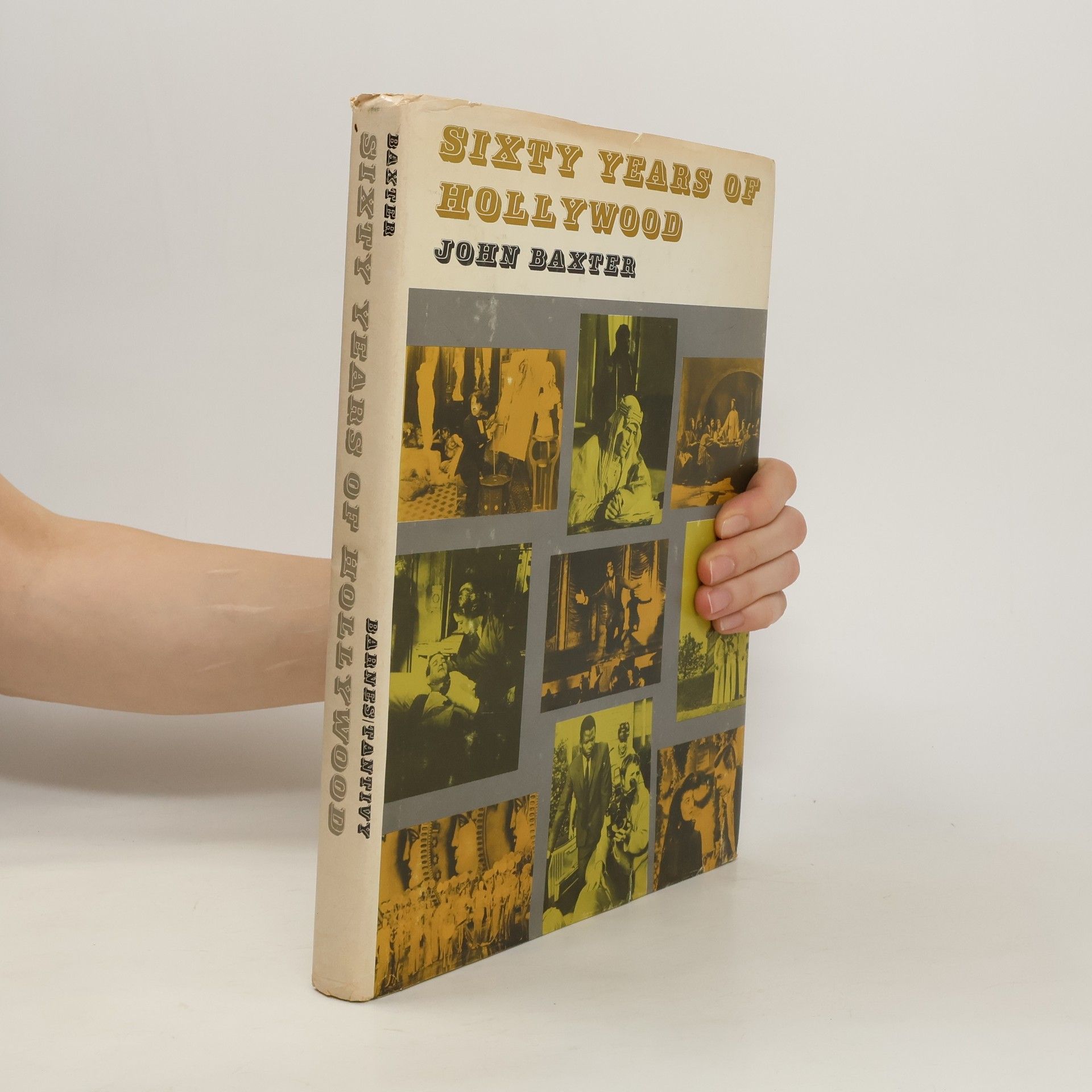A fascinating exploration of the life of Charles Boyer.
John Baxter Books
John Baxter is an Australian author renowned for his insightful explorations of cinema and its creators. His early career in journalism and filmmaking in Australia fostered a deep fascination with the seventh art, leading to numerous biographies of film personalities and incisive film criticism. Relocating to Paris, his writing evolved to encompass autobiographical works, delving into personal experiences and the city's allure. Baxter's distinctive style is marked by its erudition and its ability to capture the essence of both artistic creations and lived experiences.






Saint-Germain-des-Prés
- 235 pages
- 9 hours of reading
For many years, Saint-Germain-des-Prés has been a stronghold of sans culottes, a refuge to artists, a paradise for bohemians. It's where Marat printed L'Ami du Peuple and Thomas Paine wrote The Rights of Man. Napoleon, Hemingway, and Sartre have all called it home. Descartes is buried there. Now bestselling author and Paris expert John Baxter takes listeners on a narrative tour of Saint-Germain-des-Pres, which is also where Baxter makes his home. Tucked along the shores of the Left Bank, Saint-Germain-des-Pres embodies so much of what makes Paris special. Its cobblestone streets and ancient facades survive to this day, spared from modernization thanks to a quirk in their construction. Traditionally cheap rents attracted outsiders and political dissidents from the days of Robespierre to the student revolts of the 1960s. And its intellectual pedigree boasts such luminaries as Pablo Picasso, Arthur Rimbaud, F. Scott Fitzgerald, Simone de Beauvoir, Gertrude Stein, and Albert Camus. Part-history, part-guidebook, Saint-Germain-des-Pres is a fresh look at one of the City of Light's most iconic quarters, and a delight for new tourists and Paris veterans alike
Montmartre
- 256 pages
- 9 hours of reading
In the second portrait of his series Great Parisian Neighborhoods, award- winning raconteur John Baxter leads us on a whirlwind tour of Montmartre, the hill-top village that fired the greatest achievements of modern art while also provoking bloody revolution and the sexual misbehavior that made Paris synonymous with sin High on the northern edge of Paris, Montmartre has always attracted bohemians, political radicals, the searchers for artistic inspiration as well as those hungry for pleasure. In its winding, windmill- shadowed streets, which, only fifty years before, saw the anarchist rising of the Commune, Renoir, Picasso and van Gogh seized a similar freedom to remake painting, while, in the tenderloin of Pigalle, Toulouse-Lautrec drew the cancan dancers of the Moulin Rouge, celebrating a hedonism that titillated the world, In Montmartre , bestselling author and IACP Award winner John Baxter lifts the curtain on a district that visitors to Paris seldom see. From the tumbledown workshops of the Bateau Lavoir in which Picasso and Braque created Cubism to Clichy's Cabaret of Nothingness where guests dined at coffins under lamps of human bones, the whole of this mysterious enclave is ours to explore. For visitors and armchair travelers alike, Montmartre captures the excitement and scandal of a fascinating quarter that condenses the elusive perfumes, colors and songs of Paris.
Listen to this
- 480 pages
- 17 hours of reading
Ever wonder what albums your favourite recording artist listens to and loves Now in this one-of-a-kind reference book more than 100 artists from the worlds of pop, rock, folk, jazz, country, and blues offer their opinions on what moves them to tears of joy or just spends a lot of time on their turntables.
Traces the life of the controversial Spanish director most famous for "Un Chien Andalou," "Belle de Jour," and "The Discrete Charm of the Bourgeoisie"
The Most Beautiful Walk in the World: A Pedestrian in Paris
- 298 pages
- 11 hours of reading
Thrust into the unlikely role of professional "literary walking tour" guide, an expat writer provides the most irresistibly witty and revealing tour of Paris in years. In this enchanting memoir, acclaimed author and long- time Paris resident John Baxter remembers his yearlong experience of giving "literary walking tours" through the city. Baxter sets off with unsuspecting tourists in tow on the trail of Paris's legendary artists and writers of the past. Along the way, he tells the history of Paris through a brilliant cast of characters: the favorite cafÉs of Ernest Hemingway, F. Scott Fitzgerald, and James Joyce; Pablo Picasso's underground Montmartre haunts; the bustling boulevards of the late-nineteenth-century flÂneurs; the secluded "Little Luxembourg" gardens beloved by Gertrude Stein; the alleys where revolutionaries plotted; and finally Baxter's own favorite walk near his home in Saint-Germain-des-PrÉs.
A pound of paper: confessions of a book addict
- 336 pages
- 12 hours of reading
Enter a world of detail-obsessed book collectors in this addictive memoir. By the 1960s, a copy of Graham Greene’s Brighton Rock without its dust jacket was worth about $1,000, while one with the jacket could fetch around $4,500, and a perfect jacket copy sold for over $100,000. John Baxter caught the collecting bug in 1978 when he discovered a rare copy of Greene’s The Little Horse Bus for just 50¢. That day, he also met Martin Stone, a legendary figure in the bookselling world, who became his mentor and friend. This brilliantly readable and humorous memoir introduces readers to the fanatical world of book collectors, from those who buy at auctions to the sleuths who use cunning to track down rare finds. Along the way, we encounter eccentric characters like Driff Field, who exclusively collects books about suicide or by authors who have taken their own lives. The narrative features completists, condition freaks, and a host of rich and famous collectors, including Barry Humphries and Sarah Michelle Gellar. This entertaining memoir is sure to captivate the literati and anyone intrigued by the passion of book collecting.
Exploring the enchanting allure of Paris, the narrative intertwines personal experiences of love with an exploration of the city's hidden gems. The author, a globe-trotting film critic, takes readers on a scandalous journey through Parisian nightlife, revealing the vibrant history of literary cafés and infamous brothels frequented by iconic figures like Hemingway and Dali. This witty and audacious account showcases the seductive charm of the City of Light, appealing to lovers and connoisseurs alike, while uncovering the sultry secrets often overlooked by traditional guidebooks.
Five Nights in Paris
- 334 pages
- 12 hours of reading
An unforgettable nocturnal tour through five iconic Parisian neighborhoods by the bestselling author of THE MOST BEAUTIFUL WALK IN THE WORLD.
Sixty Years of Hollywood
- 260 pages
- 10 hours of reading



